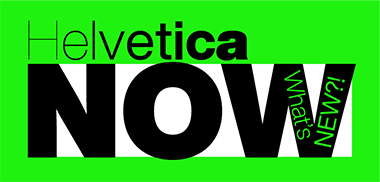

The variable format gives Helvetica Now users access to cutting-edge typography with design flexibility and expression, both in static instances and in dynamic applications, plus greater novelty, choice and improved digital performance. It also comes with a range of new additions, including new weights (hairline and extra black), special characters (including numbers in circles and a suite of arrows for information design), and a host of alternate letterforms – from a single storey ‘a’ to a straight legged uppercase ‘R’ – which Nix says have given the design “a completely new flavour”.The Monotype Studio has witnessed a wave of interest and adoption of variable fonts over the past year especially as digital transformation drives home the need for both brand distinctiveness and smaller, faster fonts for quicker web load times. The typeface includes 48 fonts in three optical sizes – micro, text and display.

Helvetica Now is not a revival, says Monotype, but an entirely new typeface, with every letterform and character revised and redrawn for optimum legibility. We still do all those print applications that we did before but there’s this entire other vast array of screen-based applications for type.”Īfter 35 years, Monotype has finally released a new version of Helvetica fit for the 21st century. “Now of course, the way that we use type is completely different. “The screen representation was sort of secondary how it behaved when you printed it out was the most important thing,” he explains. As Charles Nix, Type Director at Monotype points out, this digital version was created in a print-centric world – and a lot has changed since then.

The original design was cut in metal and a digital version (licensed by Monotype) was created in 1983. Created by Max Miedinger and Eduard Hoffman in 1957, it has become one of the best known and most popular type designs in the world – appearing in countless brand identities and ad campaigns as well as public signage and even government documents. Few typefaces – if any – have had as big an impact on visual culture as Helvetica.


 0 kommentar(er)
0 kommentar(er)
